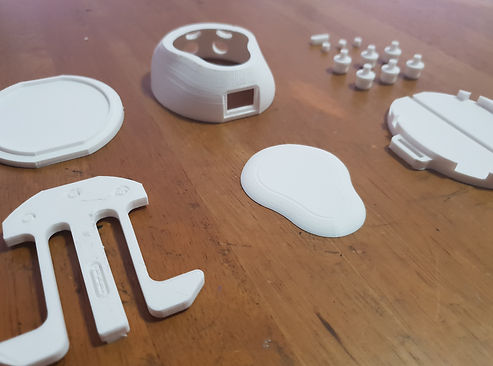BRAILLE-IN
A wearable braille typer
8 months (Feb 2018 - Oct 2018)
In collaboration with Wei Yaw, Albert, Jae Hoon, and Hyun Woo
(Nanyang Technological University and Dongshin University)
Design Brief:
To create an innovative product

Background
Braille remains an important language for the visually impaired as it improves their reading and comprehension skills, directly affecting their employability in the modern world today. However, the traditional braille keyboard is bulky and not portable. In the age of wearables, can we devise a solution to improve the convenience of communication for the visually impaired?
Braille-in is conceptualized as an assistive device which helps the visually impaired learn and practice using Braille in their daily lives. Due to the prevalence of smartphones and various voice commanding functions, there is a Braille Literacy Crisis among the visually impaired community. To reverse the trend, the team believes that technology can supplement instead of replace how Braille helps the community, and hence, the idea of Braille-in was born to help the visually impaired learn and practice Braille, regaining their fluency in the language.
After conceptualization, the prototype was 3D-printed and assembled. The electronics was then housed in the 3D-printed enclosure.



Electronics
Using Arduino Nano, the electronics schematics and layout for the mechanical buttons was tested, which will be used as the Braille Input Interface of the device.




Usability Features
To access the input interface, a sliding mechanism is incorporated into the device so that users can store it when not in use, and slide the platform out when required. Tactile round buttons are also designed to be larger than usual buttons, allowing easy identification of the input interface. The tactile time display was conceptualized but not realized in this project.



Actual Prototype Demonstration
Awards
The final prototype and concept was eventually submitted to the Sixth International Students Joint Capstone Design Project (i-CAPS) Competition 2018 held in South Korea and awarded the Gold Prize. The team was also invited to participate in the E2 Festa Exhibition 2018, and awarded the Excellence Prize.


